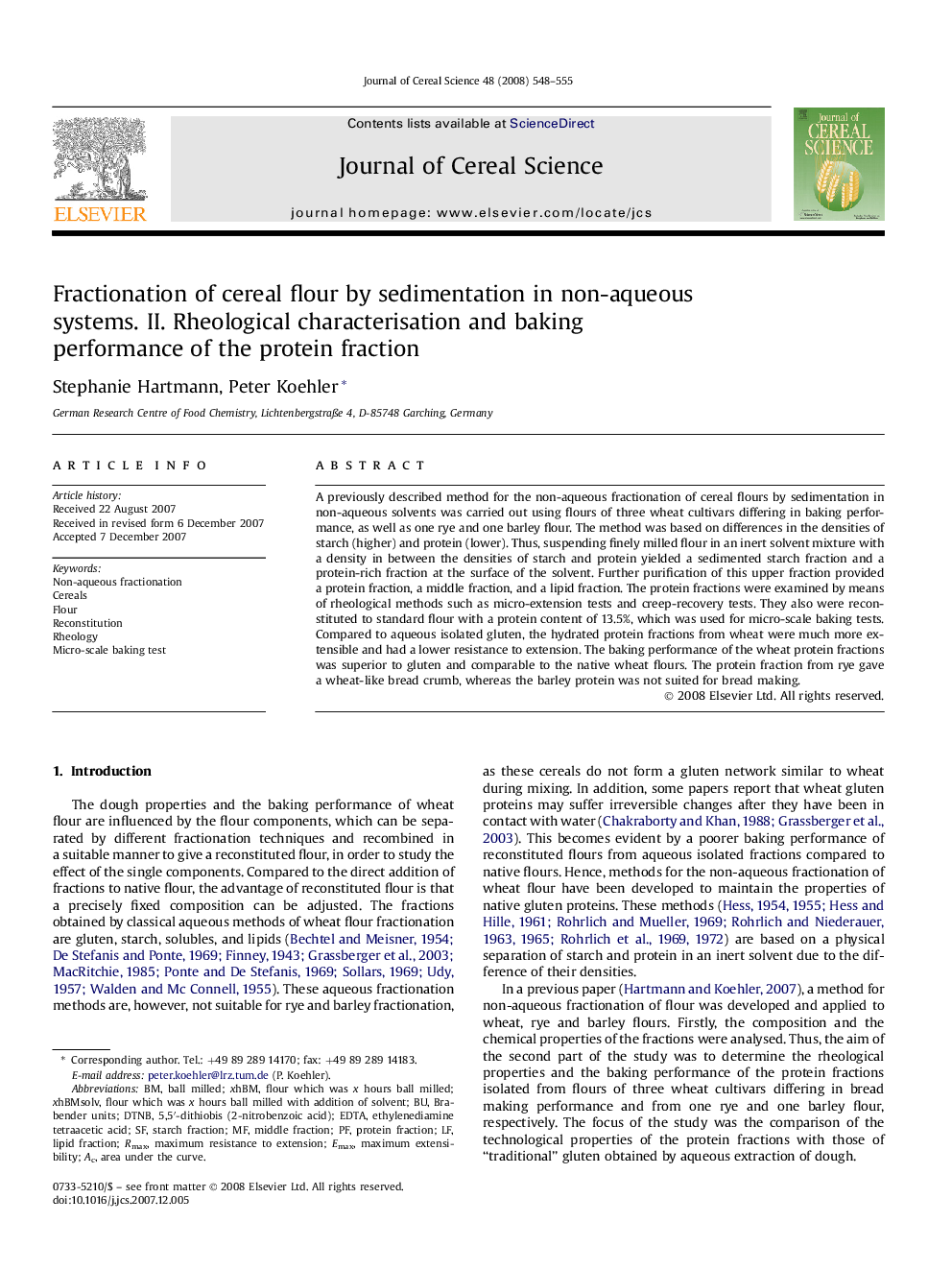| Article ID | Journal | Published Year | Pages | File Type |
|---|---|---|---|---|
| 4516798 | Journal of Cereal Science | 2008 | 8 Pages |
A previously described method for the non-aqueous fractionation of cereal flours by sedimentation in non-aqueous solvents was carried out using flours of three wheat cultivars differing in baking performance, as well as one rye and one barley flour. The method was based on differences in the densities of starch (higher) and protein (lower). Thus, suspending finely milled flour in an inert solvent mixture with a density in between the densities of starch and protein yielded a sedimented starch fraction and a protein-rich fraction at the surface of the solvent. Further purification of this upper fraction provided a protein fraction, a middle fraction, and a lipid fraction. The protein fractions were examined by means of rheological methods such as micro-extension tests and creep-recovery tests. They also were reconstituted to standard flour with a protein content of 13.5%, which was used for micro-scale baking tests. Compared to aqueous isolated gluten, the hydrated protein fractions from wheat were much more extensible and had a lower resistance to extension. The baking performance of the wheat protein fractions was superior to gluten and comparable to the native wheat flours. The protein fraction from rye gave a wheat-like bread crumb, whereas the barley protein was not suited for bread making.
